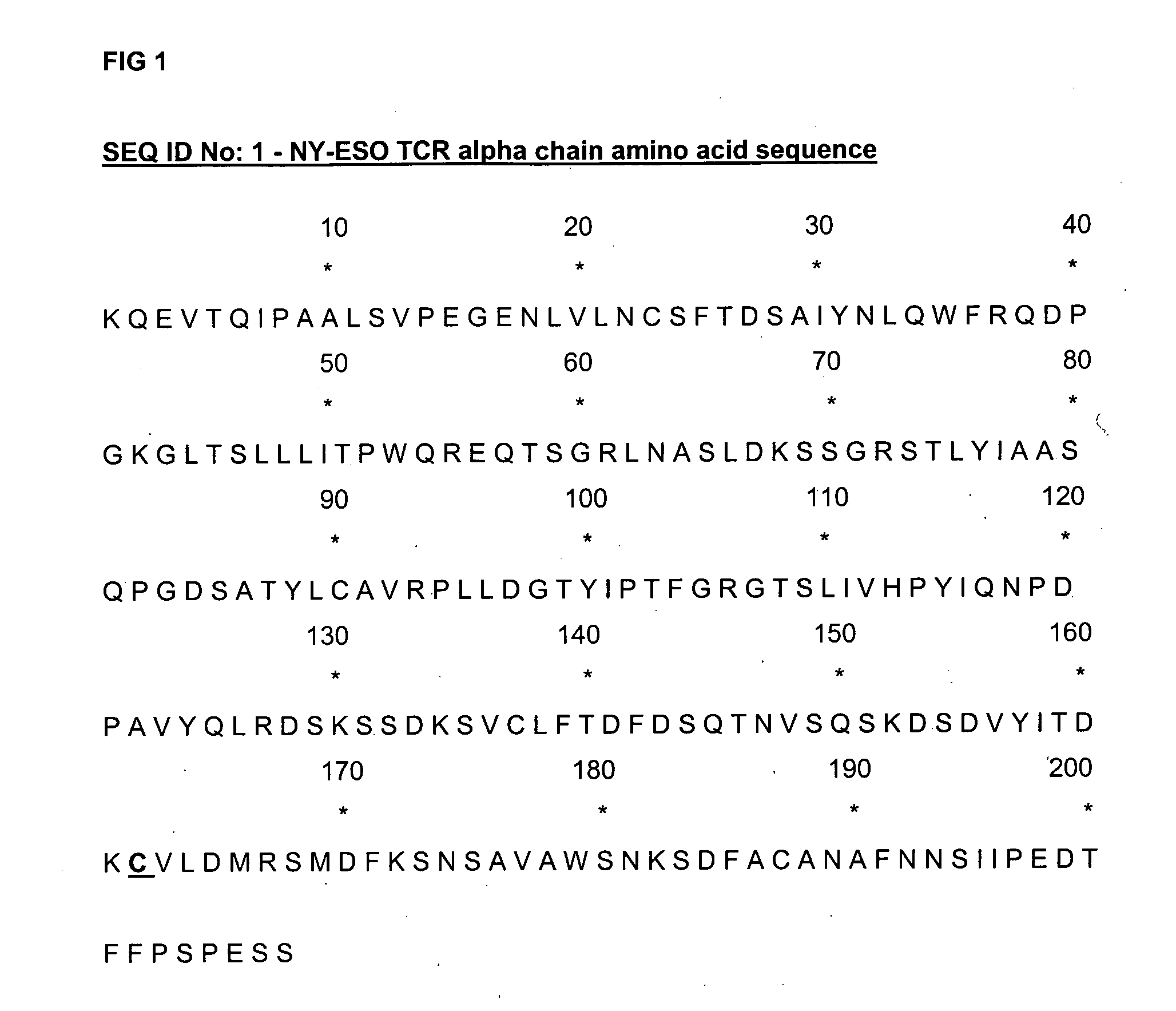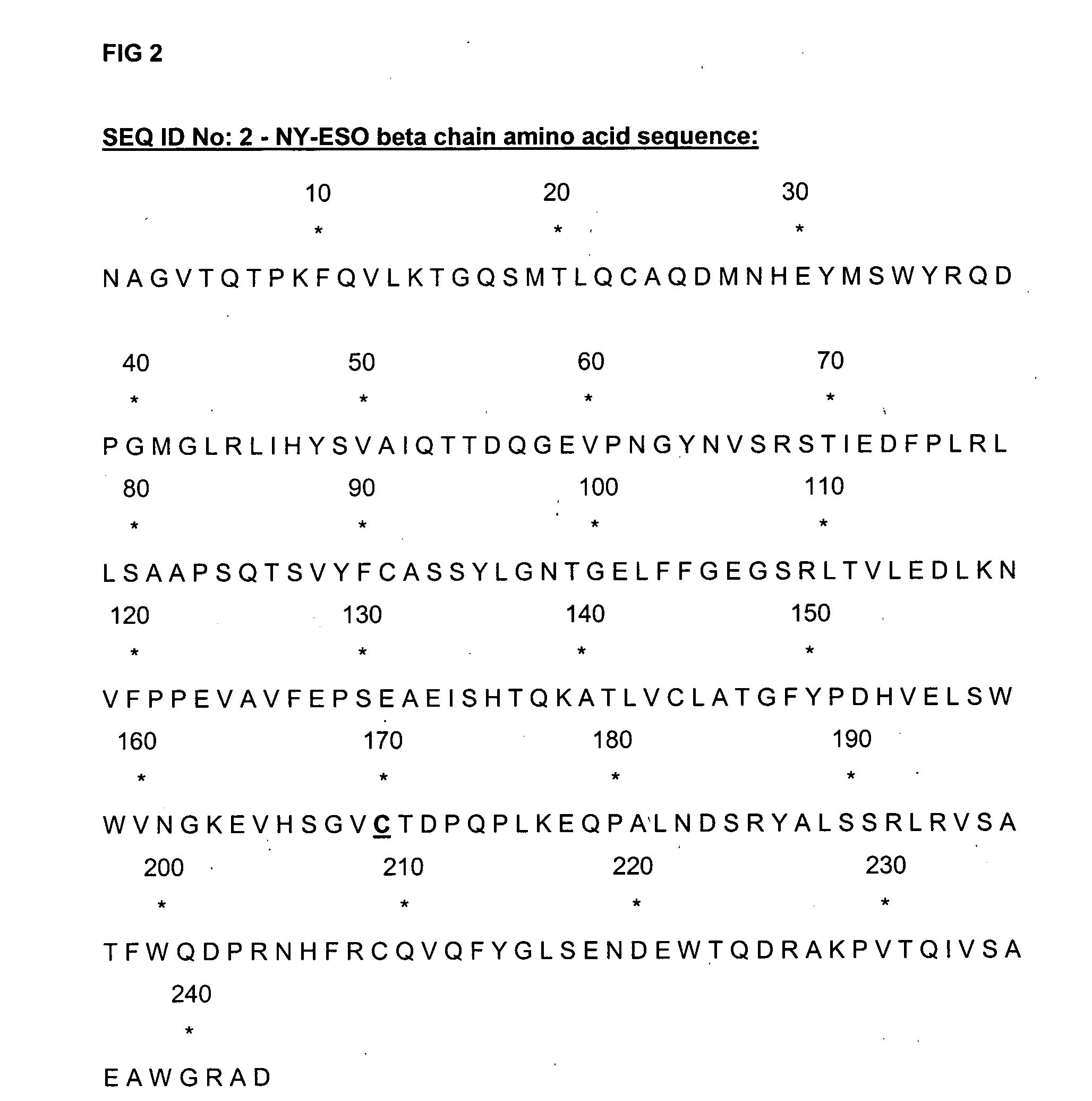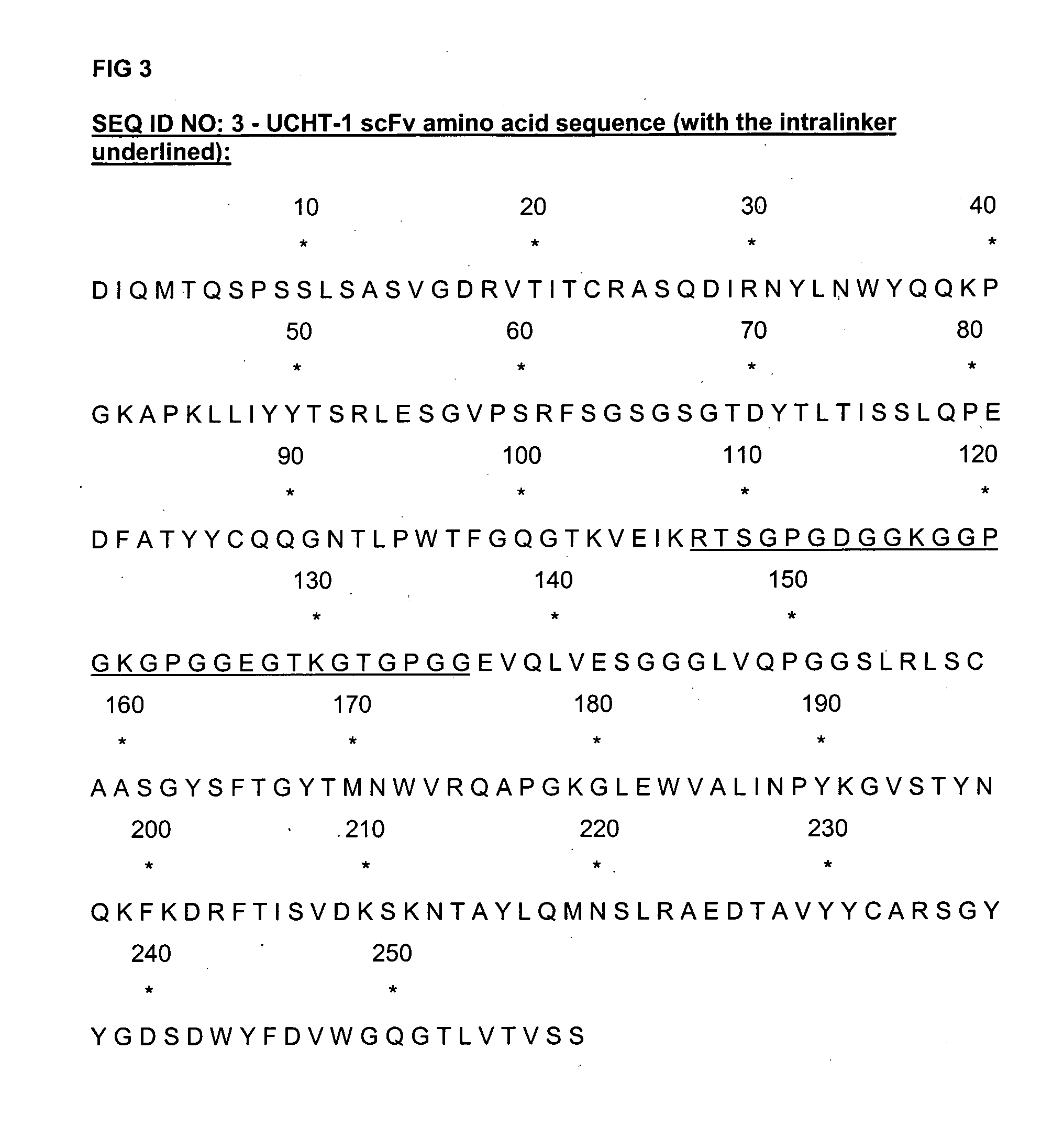Bifunctional polypeptides
a polypeptide and functional technology, applied in the field of bifunctional polypeptides, can solve the problems of reducing the binding efficiency of the native ligand, not being stable, and not being able to recognise the native ligand at a relatively high concentration
- Summary
- Abstract
- Description
- Claims
- Application Information
AI Technical Summary
Benefits of technology
Problems solved by technology
Method used
Image
Examples
example a
Preparation of Soluble αβ TCRs Having Effector Polypeptides Fused to the C- or N-Terminus of the TCR β Chain
[0019]A1. Soluble NY-ESO TCR with Anti-CD3 Antibody as Effector Polypeptide
[0020]The soluble NY-ESO TCR of this example has the property of binding to the SLLMWITQV peptide when presented on an HLA-A2 molecule.
[0021]SEQ ID No: 1 (FIG. 1) is the amino acid sequence of the alpha chain of an NY-ESO TCR, in which C162 (using the numbering of SEQ ID No: 1) replaces T48 of its TRAC constant region.
[0022]SEQ ID No: 2 (FIG. 2) is the amino acid sequence of the beta chain NY ESO-TCR, in which C170 (using the numbering of SEQ ID No: 2) replaces S57 of its TRBC2 constant region.
[0023]SEQ ID No: 3 (FIG. 3) is the amino acid sequence of an anti CD3 UCHT-1 scFv antibody, with its intralinker sequence underlined.
[0024]FIG. 4 shows in block diagram form the structure of a soluble NY-ESO αβ TCR having the α chain SEQ ID No: 1 and the β chain SEQ ID No: 2, and having the anti CD3 UCHT-1 scFv an...
example b
Properties of Soluble αβ TCRs Having Effector Polypeptides Fused to the C- or N-terminus of the TCR β Chain
[0059]B1. Soluble NY-ESO TCR with Anti-CD3 Antibody as Effector Polypeptide
a. Redirection and Activation of CD8+ T Cells by the Soluble NY-ESO TCR Fused to an Anti-CD3 Antibody Against NY-ESO Peptide-Presenting Cells
[0060]The following assay was carried out to demonstrate the activation of cytotoxic T lymphocytes (CTLs) by an anti-CD3 scFv-TCR fusion via specific peptide-MHC complex. IFN-γ production, as measured using the ELISPOT assay, was used as a read-out for cytotoxic T lymphocyte (CTL) activation and the evaluation of the potency of the anti-CD3 scFv portion of the fusion.
Reagents
[0061]Assay media: 10% FCS (Gibco, Cat#2011-09), 88% RPMI 1640 (Gibco, Cat#42401), 1% glutamine (Gibco Cat#25030) and 1% penicillin / streptomycin (Gibco Cat#15070-063).
Peptide: (SLLMWITQV) initially dissolved in DMSO (Sigma, cat#D2650) at 4 mg / ml and frozen. T2 cells were pulsed with the describe...
PUM
| Property | Measurement | Unit |
|---|---|---|
| Electric charge | aaaaa | aaaaa |
| Electric charge | aaaaa | aaaaa |
| Electric charge | aaaaa | aaaaa |
Abstract
Description
Claims
Application Information
 Login to View More
Login to View More - R&D Engineer
- R&D Manager
- IP Professional
- Industry Leading Data Capabilities
- Powerful AI technology
- Patent DNA Extraction
Browse by: Latest US Patents, China's latest patents, Technical Efficacy Thesaurus, Application Domain, Technology Topic, Popular Technical Reports.
© 2024 PatSnap. All rights reserved.Legal|Privacy policy|Modern Slavery Act Transparency Statement|Sitemap|About US| Contact US: help@patsnap.com










